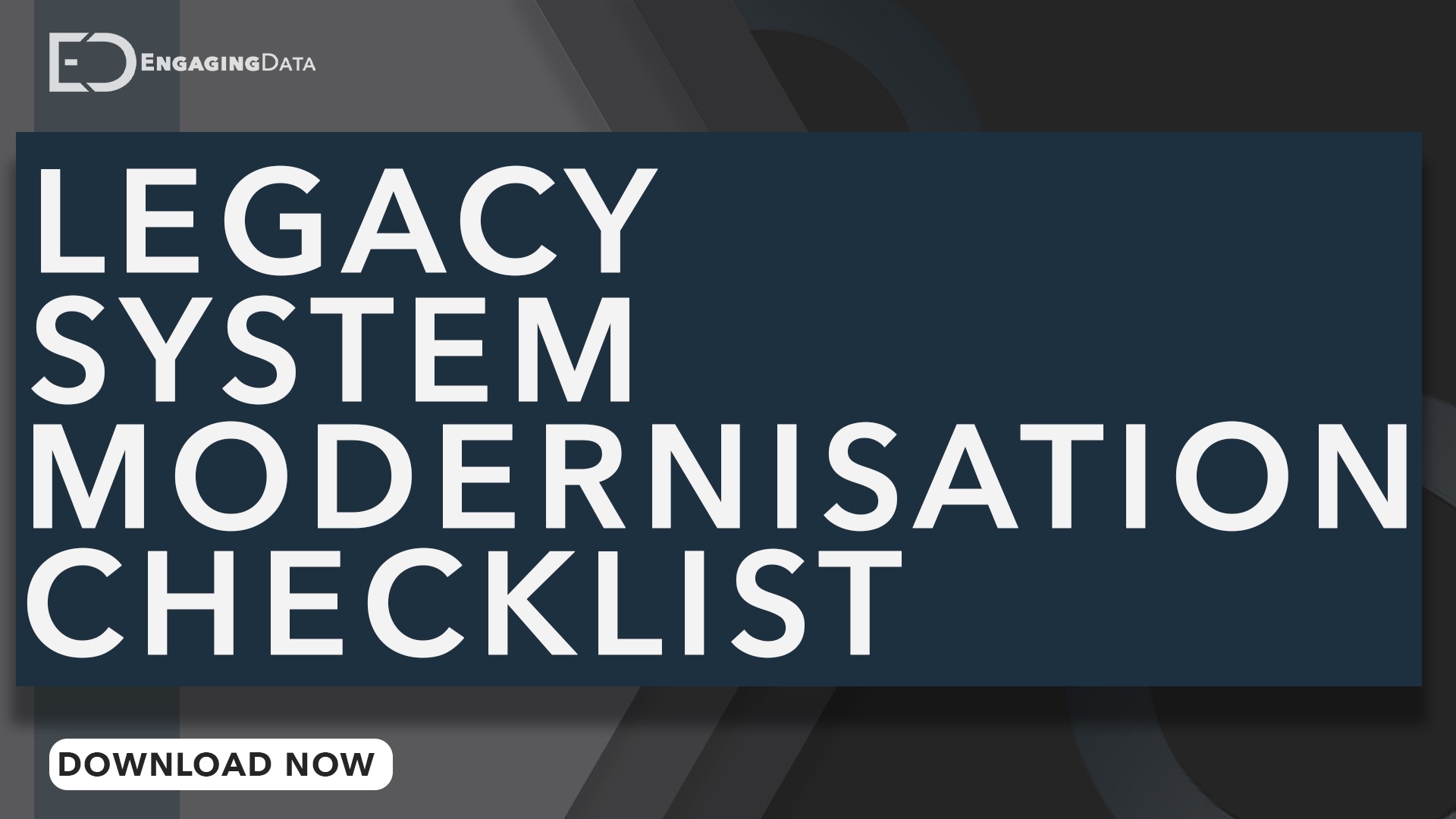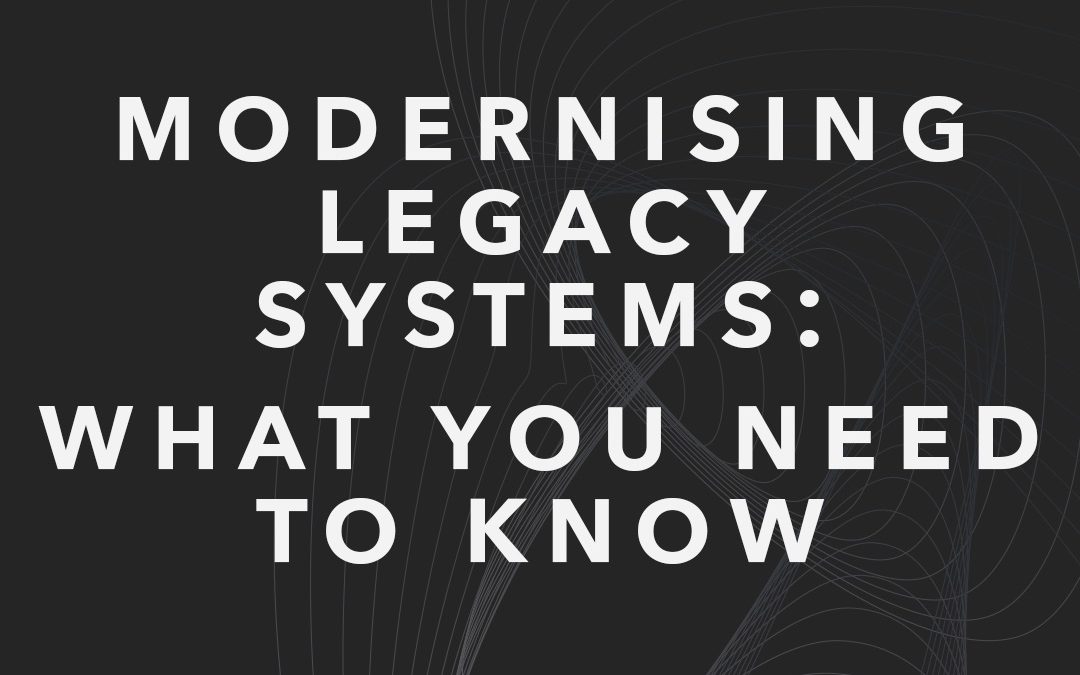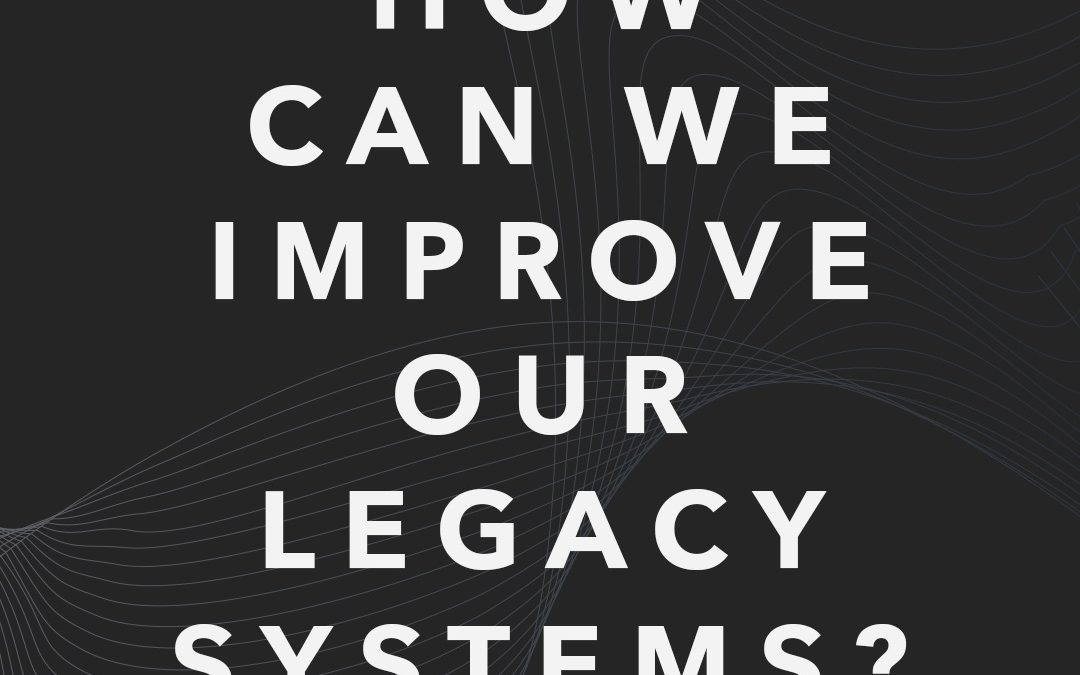Modernising Legacy Systems: What You Need to Know
Legacy systems can hinder business growth, operational efficiency, and security. As technology evolves, it is becoming essential for business to upgrade these outdated systems
Whether it’s improving performance, addressing security risks, or meeting new market demands, modernising legacy systems helps organisations stay competitive.
In this blog post, we’ll cover what legacy systems are, why they need to be modernised, the challenges involved, and the best practices for a successful upgrade.
By the end, you will have a clear understanding of how to take your business into the future.
What are Legacy Systems?
A legacy system refers to outdated software or hardware still in use despite newer, more efficient alternatives.
Often, these systems are deeply integrated into the business, supporting critical operations such as finance, inventory management, and customer data.
However, legacy systems tend to be inefficient, expensive to maintain, and difficult to scale.
One of the key issues with legacy systems is their inability to adapt to modern technologies like cloud computing, AI, or advanced data analytics. As a result, businesses that continue to rely on legacy systems may face operational bottlenecks, higher maintenance costs, and increased risks of cyberattacks.
Modernisation is a solution that helps businesses transition from these outdated systems to more agile, secure, and scalable infrastructures, ensuring better performance and cost efficiency.
Why Modernise Legacy Systems?
The decision to modernise the legacy system comes with several important benefits.
Organisations that invest in updating their infrastructure are better positioned to remain competitive in a rapidly changing market.
Below are the primary reasons why companies are opting for legacy system modernisation (and why you should too!):
Enhanced Efficiency
Modern systems are designed for speed and efficiency.
By modernising outdated software, businesses can streamline workflows, reduce manual processes, and eliminate the performance issues often caused by legacy systems.
This not only improves productivity but also reduces the cost and time needed to complete tasks.
With automation and real-time processing, modern systems enable faster, smarter decision-making.
Scalability and Flexibility
As businesses grow, so do their technology needs.
Legacy systems often limit scalability and flexibility, making it difficult to adapt to changing business demands. A modern system, on the other hand, is built to be flexible and scalable, allowing for easy integration with new tools, platforms, and services.
This ensures that businesses can expand operations without overhauling their IT infrastructure repeatedly.
Security and Compliance
Security is a major concern when it comes to legacy systems.
Older technologies are often vulnerable to cyberattacks, and they may not meet modern security standards. Upgrading to a modern system ensures better protection against cyber threats and helps businesses comply with regulations like GDPR, safeguarding sensitive data and reducing legal risks.
Common Challenges in Legacy System Modernisation
Modernising a legacy system is not without challenges.
Businesses often face technical, financial, and operational hurdles during the process. One of the key issues is the risk of data loss or downtime during migration. Migrating from an outdated system to a modern one requires careful planning and execution to avoid business disruptions.
Another challenge is the cost. While modernising a legacy system can lead to long-term savings, the upfront investment can be substantial. Businesses need to allocate budget for new software, training, and potential disruption.
Finally, there’s a challenge of resistance to change. Employees may be reluctant to adopt new systems, especially if they’ve been working with the same tools for years! Ensuring proper training and support is crucial for a smooth transition.
Best Practices for Successfully Modernising Legacy Systems
Assess Your Current IT Infrastructure
Before diving into modernisation, businesses should conduct a thorough assessment of their existing systems. This includes identifying the key pain points, understanding the limitations of the legacy infrastructure, and determining which areas need immediate improvement.
It’s essential to evaluate how the legacy system aligns with current business goals and future scalability.
Choose the Right Modernisation Approach
There are several approaches to legacy system modernisation, including rehosting, replatforming and refactoring.
Each method has its advantages and challenges, so it is important to choose the approach that best fits your business needs.
Rehosting involves moving the legacy system to a new environment with minimal changes, while refactoring involves rebuilding the system from the ground up.
The right choice depends on factors like cost, time, and long-term goals.
Staying Competitive with Modernised Systems
As technology continues to evolve, businesses that modernise their legacy systems are in a better position to stay ahead of the competition.
Modern IT systems provide the agility, scalability and security needed to thrive in an increasingly digital world.
By embracing modernisation, businesses can future-proof their operations, enhance customer experiences, and unlock new opportunities for growth.
The future of Data will be defined by continuous innovation, and businesses that remain adaptable will find themselves in a stronger competitive position. Modernisation is not just about upgrading technology – it’s about aligning your IT infrastructure with the evolving needs of your business.
Modernising legacy systems is no longer optional – it’s a necessity for businesses looking to stay relevant.
The benefits of modernisation, from improved efficiency to enhanced security, far outweigh the challenges involved.
By following the best practices and carefully planning the process, businesses can overcome the common hurdles and successfully transition to a modern, scalable infrastructure.
Now is the time to assess your current systems and start planning for the future.
The path to modernisation may be complex, but the rewards are clear, sustained growth, improved performance, and a competitive edge.
Ready to Modernise Your Outdated Systems?
Book your FREE 30-minute consultation call today!
Let’s discuss your unique challenges and explore how we can help you achieve your goals.










